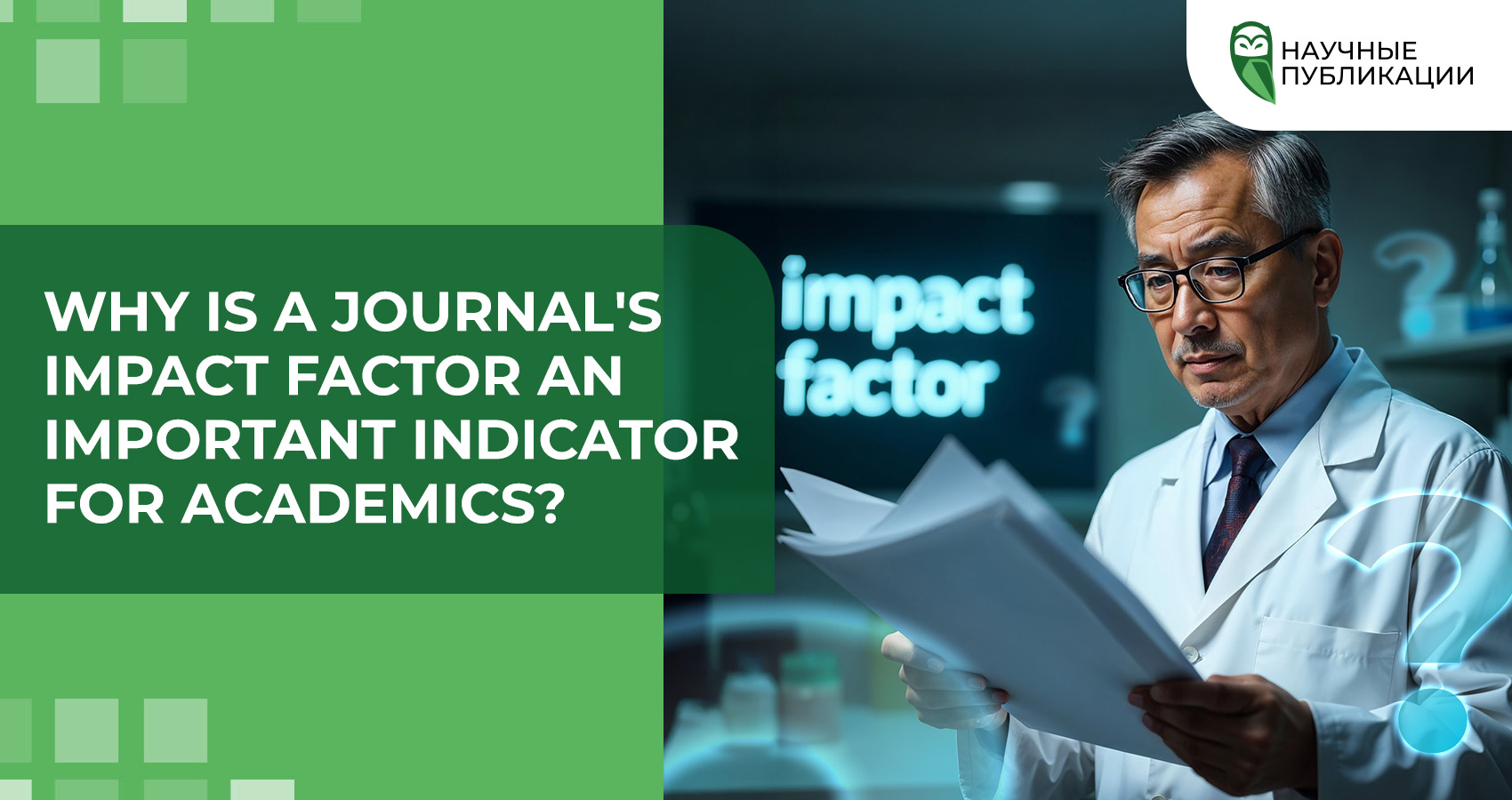Both those who are just beginning their scientific journey and experienced scientists need to publish the results of their research in scientific journals. It is important to choose the right edition for publication should be carried out taking into account its key indicators. One of the indicators is the impact factor.

Impact factor
Impact factor (IF) is a quantitative indicator reflecting the influence of a scientific publication in the academic environment. The first researcher to study the scientific citation index was the American linguist Eugene Garfield. His work became the basis for the creation of the first rating of scientific journals and the introduction of this indicator. The impact factor evaluates journals, not individual articles or authors, i.e. the level of citation of specific publications is not determined by the authority of their authors.
Impact Factor Development
The impact factor has been calculated since 1960 and the results are published in the Journal Citation Report. At first, this indicator was applied only to journals included in Web of Science SCIE and SSCI within the Web of Science Core Collection. However, in 2022, changes to the JIF calculation methodology were announced to extend it to all Web of Science Core Collection journals, particularly the Arts and Humanities Citation Index (AHCI) and the Multidisciplinary New Source Citation Index (ESCI).
Types of impact factor
- Two-year impact factor: reflects citations of a journal's publications within two years of indexing
- Five-year impact factor: takes into account citations of publications over five years. This option is particularly suitable for the social sciences and humanities, where citations to articles often occur with some delay
Where can I find a journal's impact factor?
To check the impact factor of a scientific journal, follow the steps below:
- Go to the Journal Citation Reports (JCR) website.
- Use the search function to find the journal you are looking for (enter the journal name).
- Find the journal in the search results and view its current impact factor.
You can also check the impact factor of a publication on the Web of Science database site. It is very easy to do: you need to enter the name of the journal, and if it is indexed in this database, you will get the result. You can also use filters to narrow your search by index, current content, country, category and so on. When you open the desired journal, you will be able to see its impact factor.
Do not forget that the impact factor is only one of the indicators for assessing the quality of a scientific journal, and it should not be the only criterion for selecting a journal for publication.
The impact factor provides a number of opportunities for scientists:
- To evaluate and compare journals belonging to the same scientific field.
- To track the frequency of citations of articles in the journal for a specific time period.
- To study the degree of demand and interest in the publication among the scientific audience.
- Helps to guide the selection of authoritative and influential scientific journal for publication.
- It is used to rank publications by the level of their scientific authority and reputation.
Impact Factor Calculation
The impact factor is calculated based on statistical processing of journal publications included in the Web of Science database.
The impact factor calculation is based on a special mechanism that uses citation as the main indicator. It takes into account the number of references to certain materials during a certain period of time.
In other words, the impact factor reflects the average number of citations of articles published in a journal, usually within the last two years.
How to calculate the two-year impact factor?
If we plan to calculate the classical impact factor for a particular journal in 2025, the formula would be:
IF = A/B
where:
- A is the number of citations of articles in 2025 that were published in 2024 and 2023
- B is the total number of articles that were published in the journal during these two years
How to calculate the five-year impact factor?
If we are going to calculate the five-year impact factor for a journal in 2025, the formula will be as follows:
IF = A/B
where:
- A is the number of citations of articles in 2025 published between 2020 and 2024
- B is the total number of articles published in the journal during the same period
Journals with a high impact factor usually have more scientific influence and are considered more authoritative, while journals with a low impact factor show less scientific importance.
Good and bad impact factor and bad impact factor
What is considered a good impact factor depends on the industry and specialisation of the journal. In general, a journal with a high impact factor usually receives more citations and recognition than other publications in the same scientific field. For different disciplines, the criteria for judging a “good” impact factor can vary considerably.
For example:
- For biomedicine – an impact factor of more than 5.
- For physics and chemistry – around 3-5.
- For social sciences – 2 or higher.
The impact factor can be low, even close to 0, which indicates the absence of citations for a certain period.
It is impossible to determine unambiguously what is a “bad” impact factor for scientific journals of all branches, as this indicator should be compared with the impact factors of other journals of the same category. For example, in the 2024 JCR report, some journals in categories such as History, Religion, Arts, and Philosophy have an impact factor of less than 0.1. At the same time, it is important to note that these categories are not a complete list and journals with high impact factors are also found in these categories.
There is also the concept of average impact factor, which is defined as the average value of impact factors of journals in a particular scientific branch or among all journals in the JCR ranking. This value depends on the specifics of the industry.
Importance and significance of the impact factor
Nowadays, the impact factor is one of the main objective tools for assessing the significance of a journal and the quality of publications in it.
The database of scientific literature, which is indexed, includes about 8500 journals from more than 65 countries. The requirements for reviewers are high. Information is published as transparent and accessible as possible. The mechanism of use and the calculation system are characterised by simplicity and reliability.
The impact factor serves as a clear confirmation of the credibility of the journal. It is an indicator that reflects the correspondence between the category of publication and the quality of the platform for its publication. The higher the impact factor of a journal, the better its articles are cited, which makes the journal more attractive to authors.
Despite its undeniable importance, the impact factor cannot be considered as the only and unconditionally reliable criterion for evaluating a journal. There are artificial methods of increasing this indicator and unscrupulous practices aimed at manipulating the figures. Therefore, journal evaluation should be carried out in conjunction with other characteristics and indicators.
If you need to publish a scientific article in a journal with an impact factor – contact Scientific Publications! We will help you to choose a suitable scientific publication and prepare an article in accordance with its requirements and criteria. Get a free consultation with our manager by filling out the form below. Together towards successful publication and new achievements!





